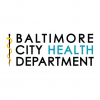Congressman Elijah Cummings, Mayor Catherine Pugh and Dr. Leana Wen Commemorate International Overdose Awareness Day
Friday Aug 31st, 2018
FOR IMMEDIATE RELEASE
BALTIMORE, MD (August 31, 2018) —Today, Congressman Elijah E. Cummings, Mayor Catherine E. Pugh, Baltimore City Health Commissioner Dr. Leana S. Wen, and community leaders observed International Overdose Awareness Day at Baltimore City Hall. Held on August 31 of each year, International Overdose Awareness Day’s purpose is to raise awareness to a deadly public health crisis and remember those who have died or suffered injury because of drug overdose.
“As we observe International Overdose Awareness Day, we must focus on the urgency of treating the drug crisis like the public health emergency that it is,” said Rep. Elijah E. Cummings. “Drug addiction is killing nearly 200 people – the equivalent of a plane crash – every single day. It is a disease, and it needs to be treated as such. That is why I introduced the CARE Act with Senator Warren, which would take the proven Ryan White model that our nation has successfully used to fight HIV/AIDS and apply it to the drug crisis. We can save lives and save money by doing what we know works – providing evidence-based treatment and support services to the millions of Americans suffering from the disease of addiction. For that reason, I will continue to fight every single day to get Congress to do the right thing by passing the CARE Act and finally treating the drug epidemic like the public health crisis it is.”
In Baltimore City, 761 people died from an overdose in 2017. Fentanyl, a powerful opioid 50 times more potent than heroin, is a major contributor to overdose deaths. Fentanyl-related deaths climbed from 12 in 2013 to 573 last year – a 5,000% increase.
“Without question, drug addiction is an affliction that affects not only those in the grip of addiction, but their families and friends, and our entire community. It is at the root of nearly every challenge facing our city,” said Mayor Catherine E. Pugh. “The epidemic of drug and opioid addiction is not unique to Baltimore and, as we know, represents the greatest health crisis currently facing our nation. The first step to dealing with it effectively is to reduce the stigma of those afflicted and create meaningful pathways that will help them to become productive citizens of our community. I’m grateful to Dr. Wen and the Baltimore City Health Department’s leadership and to all of our partners who are working to help so many of our fellow Baltimoreans deal with the disease of addiction and take steps toward a more promising future.”
Baltimore City has aggressively approached the opioid crisis with a comprehensive, three-pillar strategy based on proven programs with demonstrated results.
The first pillar aims to save lives from opioid overdose by expanding access to naloxone. In October 2015, Dr. Wen issued a blanket prescription for naloxone to the roughly 620,000 citizens of Baltimore City. Since 2015, the Health Department has taken naloxone trainings to residents where they are – in communities, jails, public housing, bus shelters, markets, hospitals, and libraries – and trained more than 43,000 Baltimore residents. To address a rapid increase in overdose deaths affecting specific communities, the Health Department partners with Baltimore City Fire Department and a variety of community partners to rapidly respond to spikes in fentanyl and other overdoses by deploying outreach teams in real time.
The second pillar works to increase access to evidence-based, on-demand treatment services and long-term recovery support. According to the Surgeon General’s report, only one in 10 people who need treatment for drug addiction are able to receive it. The Health Department is working to expand access to the gold standard of opioid addiction treatment - a combination of medication-assisted treatment, psychosocial support, and wrap-around services. The Health Department and its partners, including Behavioral Health System Baltimore, Baltimore Crisis Response Inc., and Healthcare Access Maryland Inc., support a 24/7 "crisis, information, and referral" phone hotline that connects people in need of services for substance use and mental health treatment. In 2018, Baltimore City opened the state’s first stabilization center, which provides patients with medical screenings and referrals to treatment—a beginning of a 24/7 “ER” for addiction and mental health. Through convenings and partnerships with all 11 City hospitals, the Health Department recently launched the Levels of Care Initiative to encourage all hospitals to treat addiction as they do any other illness.
Third, the Health Department leads efforts to reduce stigma and prevent addiction with science and education. The City’s Don’t Die campaign, launched in 2015 and continuing today, discusses the disease of addiction and encourages individuals to seek treatment. Its website offers a first-of-its-kind online naloxone training: www.dontdie.org. In collaboration with the Baltimore City Police Department, Behavioral Health System Baltimore, Open Society Institute-Baltimore, and many others, the Law Enforcement Assisted Diversion Program (L.E.A.D.), offers those arrested for low-level drug offenses to choose treatment over incarceration. Finally, the Health Department distributes prescribing guidelines for hospitals to reduce overprescribing of opioid medications.
“In Baltimore, we follow the science that addiction is a disease, treatment works, and recovery is possible,” said Baltimore City Health Commissioner Dr. Leana Wen. “Since 2015, everyday residents have saved the lives of more than 2,800 individuals from opioid overdose. Under Mayor Pugh’s leadership, we have implemented one of the most progressive and aggressive overdose response programs in the country. Yet, we are having to ration our treatment because we simply don’t have the resources. On this International Overdose Awareness Day, we commemorate the lives lost in our City as we look forward and call upon state and national leaders to assist us with the resources we desperately need to treat this public health crisis with urgency, compassion, and action.”
